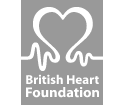No corner of the planet is free from minuscule fragments of plastic packaging, textiles or utensils. We ask scientists what this means for our health – and what we should do to protect it.
By Amy Fleming
Invisible specks of eroded plastic from long-forgotten toothbrushes, sweet wrappers, and stocking-filler toys are everywhere. They live in our laundry bins, the Mariana trench and the human bloodstream. Microplastic particles can be small enough to infiltrate biological barriers such as the gut, skin, and placental tissue. We are all now partially plastic – but how worried should we be, and is there any way to minimise our exposure?
At the moment, says Stephanie Wright, an environmental toxicologist at Imperial College, London, a lack of epidemiological and in-human data means we don’t yet know the harmful effects of microplastics, but ‘I would say reducing particle exposure in general (including microplastic) is likely to be beneficial’. But avoiding the stuff is a tall order, cons...
Want to see the rest of this article?
Would you like to see the rest of this article and all the other benefits that Issues Online can provide with?
- Useful related articles
- Video and multimedia references
- Statistical information and reference material
- Glossary of terms
- Key Facts and figures
- Related assignments
- Resource material and websites

 ‘They’re in the air, drinking water, dust, food…’ How to reduce your exposure to microplastics
‘They’re in the air, drinking water, dust, food…’ How to reduce your exposure to microplastics








